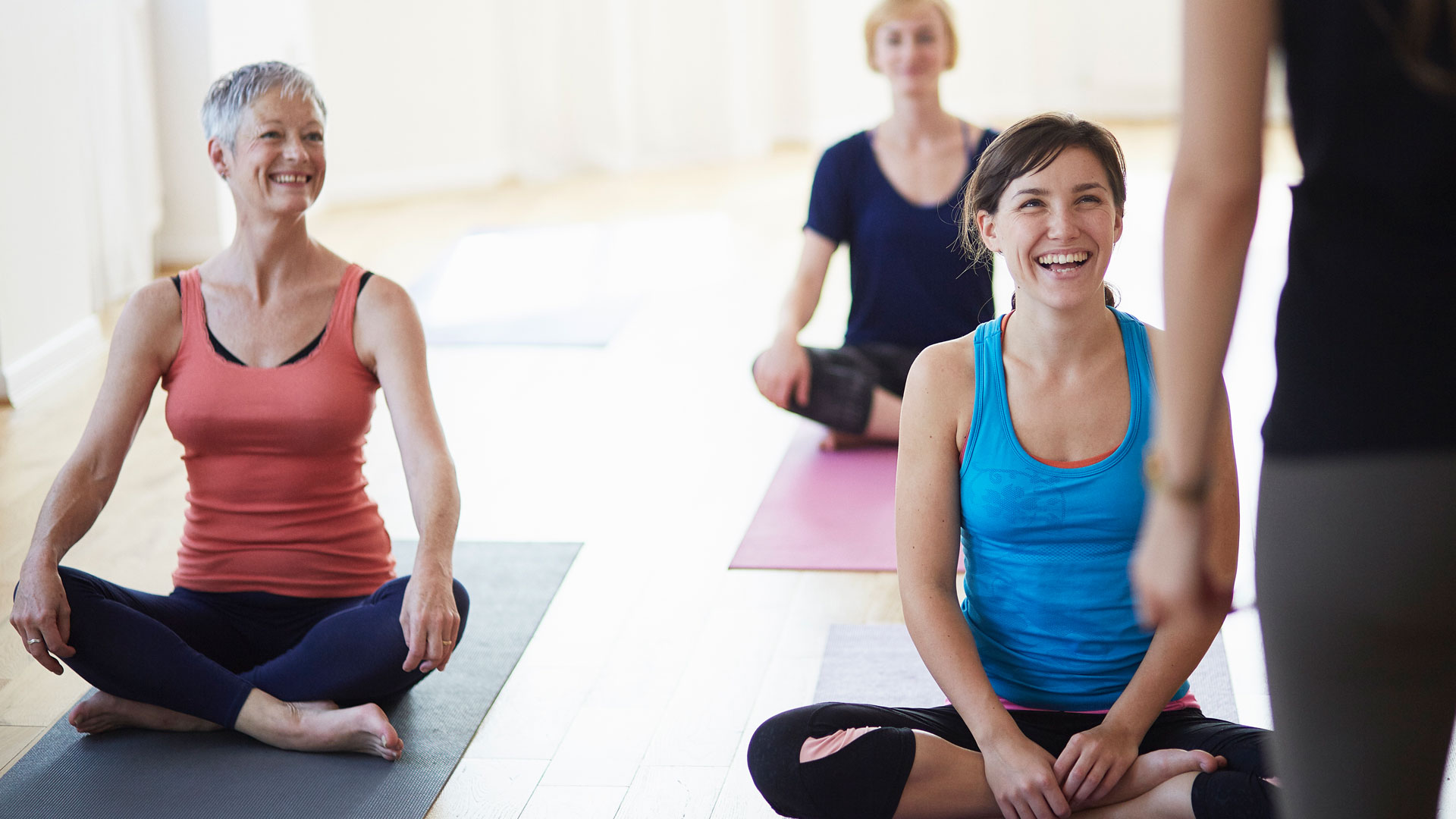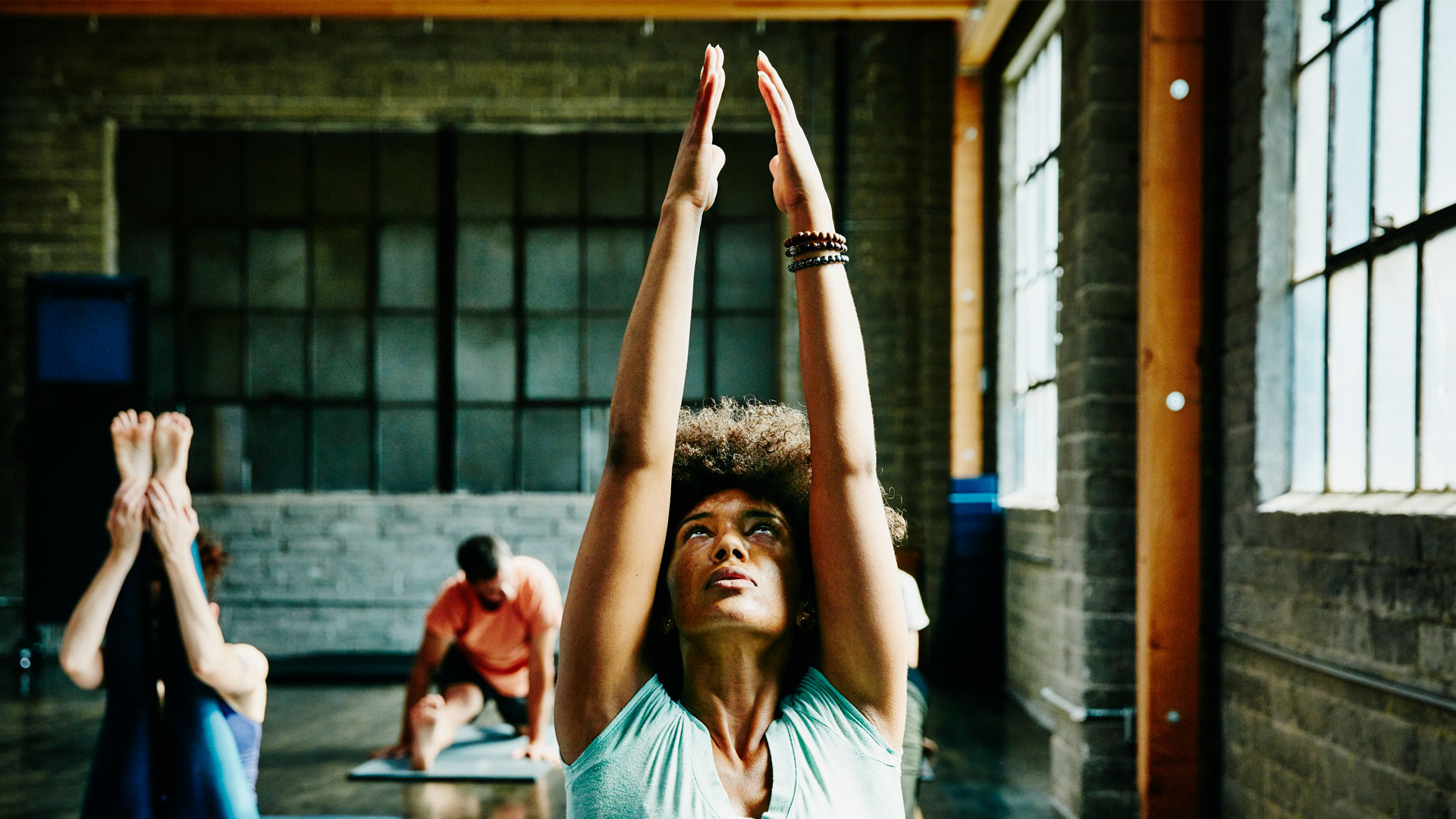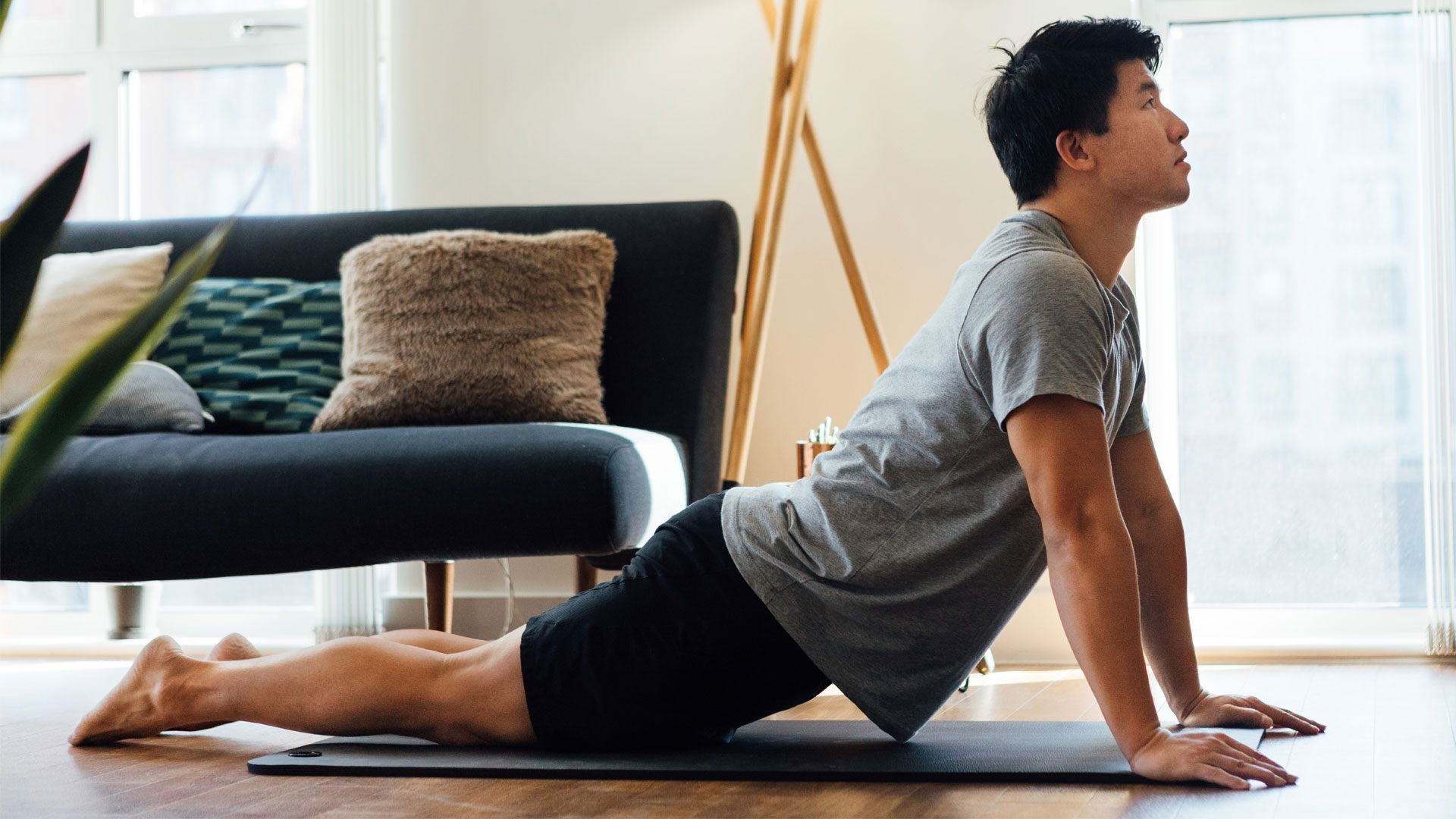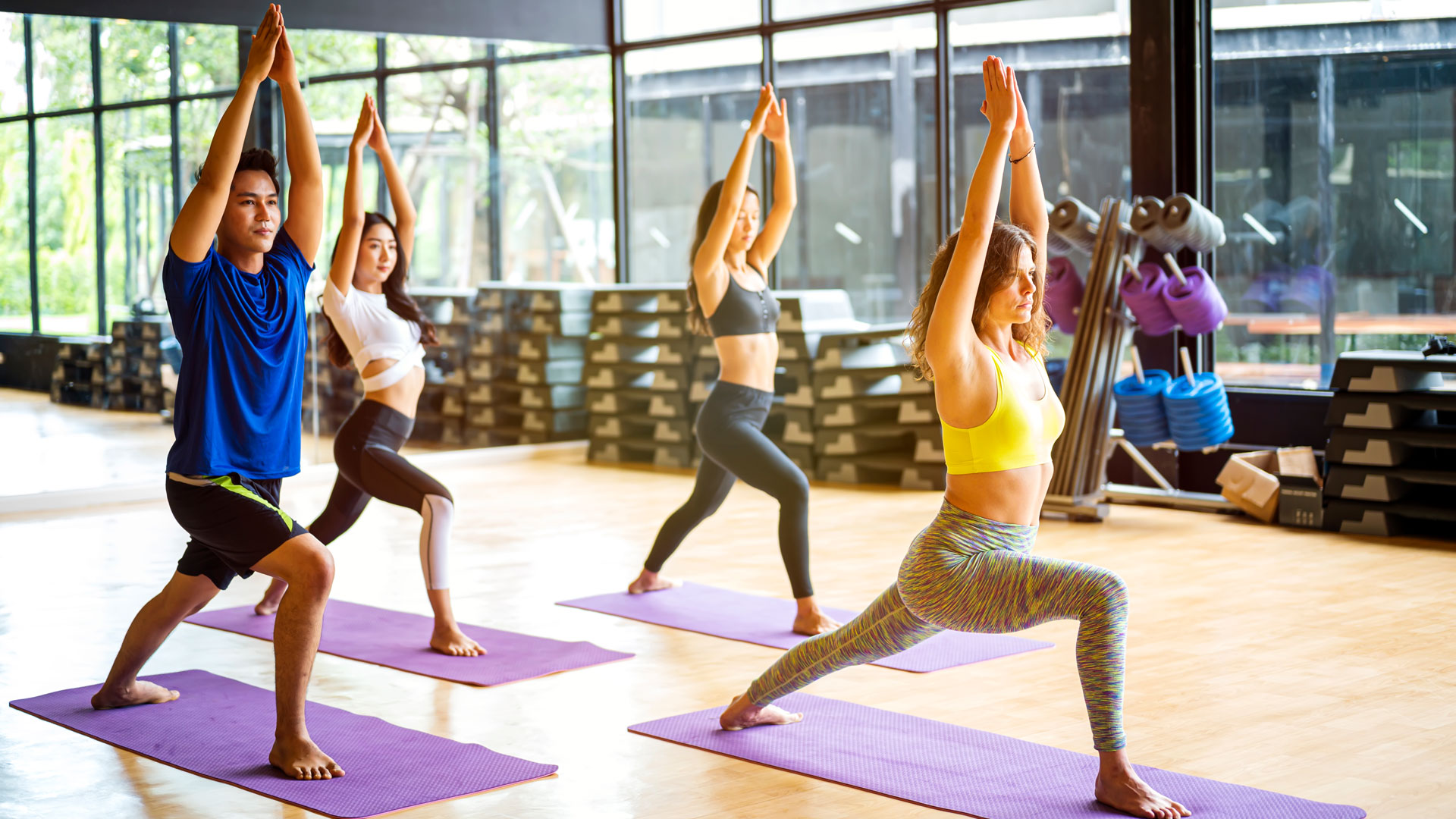What is hot yoga?
What is hot yoga? Find out everything you need to know about the exercise, including expert opinions on its benefits.

Yoga is a spiritual and physical exercise that originated in India over 5,000 years ago, but what is hot yoga? Most people may be familiar with the standard practice of yoga. According to research conducted by Yoga Alliance in 2016, a survey estimated that 36 million Americans practice some form of yoga. That was up from 20.4 million in 2012.
However, adding the element of heat to the exercise may sound strange to some. Find out about the origins of hot yoga, as well as the benefits and negative factors of doing hot yoga.
• Related: Best resistance bands
Hot yoga is practiced in a similar way to standard yoga and you still use one of the best yoga mats to incorporate a range of poses into the workout. The high-temperature conditions induce more sweating in comparison to standard yoga. Due to this, it’s always advised to stay hydrated before, during and after a hot yoga class.
The heat also helps warm up the muscles which allows yogis to stretch further and be more flexible. An average hot yoga class can range from 90 to 105 degrees Fahrenheit.
What does hot yoga involve?
Hot yoga is a form of yoga performed in hot and humid conditions. There are generally two types of hot yoga: Bikram and Vinyasa yoga.
The exercise was popularized by Bikram Choudhury founder of Bikram Yoga in the 1970s. Bikram developed hot yoga from the traditional hatha yoga practice. The hot temperature in hot yoga was devised to simulate the intense temperatures of India.
Get the world’s most fascinating discoveries delivered straight to your inbox.
According to the Yoga Journal, Bikram’s goal was to "save America through his yoga". A typical Bikram Yoga class included 26 movements, two breathing exercises and was practiced in a 105 degrees Fahrenheit room with a humidity of 40%. The teaching style at Bikram Yoga was quite hands-on with instructors regularly adjusting their student’s postures. Bikram yoga could only be taught by Bikram-trained teachers in Bikram studios.

Bikram Yoga grew massively in popularity. According to Mind is the Master, at its peak in 2006, there were over 1,650 studios in over 40 countries across the world. Since then the popularity of Bikram yoga has declined, with approximately 600 studios remaining worldwide. The founder Bikram Chourdy’s reputation has been marred with legal trouble and allegations of assault.
From the popularity of Bikram Yoga, other hot yoga studios such as Forrest yoga and Moksha yoga were founded.
The other key type of hot yoga is called Vinyasa. The difference between Bikram and Vinyasa is the transition from one pose to the next. Within the Bikram yoga practice, yogis tend to get into the pose, hold, release and then move into the next pose. Rather than flowing from one pose to another which is done while practicing Vinyasa.
Vinyasa hot yoga also offered more variety. The structure of the classes was less rigid and more up to the individual instructor. Vinyasa classes can be found in a multitude of studios. The heated Vinyasa classes are normally taught at a temperature of 95-98 degrees Fahrenheit and the slightly lower temperatures make Vinyasa yoga more suitable for beginners in comparison to Bikram.

What are the benefits of hot yoga?
The key benefits of hot yoga are:
Flexibility: According to Healthline, the temperature of the room means it takes less time for your muscles to loosen up. Yogis are able to move deeper into their stretches.
Cardiovascular health: Exercising in high heat increases the heart rate and makes the body work harder. A hot yoga class would be more strenuous and help to burn more calories than a standard yoga class.
Breathing: The breathing exercises practiced in hot yoga sessions can help increase your lung capacity over time.
Sleep quality: In 2012, a sleep monitoring study was conducted by Dr. Ravi Kudesia and Dr. Matt Bianchi for ISRN Neurology. The study concluded that Bikram yoga sessions helped respondents improve their sleep quality. Participants fell asleep quicker and if they did wake up, they stayed awake for shorter periods of time.
Stress reduction: A 2018 study in the Journal of Science and Medicine in Sport which was conducted with a sample of stressed and physically inactive adults found that a 16-week program of hot yoga dramatically reduced the participants' stress levels.
General wellbeing: In 2017, a group of hot yoga lovers told the Washington Post that "doing the exercise in a heated room strengthens the heart, clears out the veins, cleanses impurities from the body, and boosts the immune system."

Are there any bad things about hot yoga?
Hot yoga, like most exercises, needs to be practiced with caution. The intensity of the workout coupled with the hot temperature may cause a heat-related illness. According to Healthline, people with pre-existing conditions may be at risk of passing out. These conditions include:
- Heart diseases
- Diabetes
- Low blood sugar
- Issues with dehydration
- A history of heat-related illness such as heat stroke
Pregnant people are advised to consult their doctors before practicing hot yoga, but it’s typically not encouraged.
In 2015, the American Council on Exercise published a study that shone a light on concerns about Bikram yoga. During a typical Bikram yoga class, the body temperature of participants rose to 103 degrees Fahrenheit. This narrowly misses the 104-degree threshold that medical professionals class as being dangerous. From the study, Cedric Bryant, PhD, Chief Science Officer at ACE said, "For a person who’s unfit or not used to Bikram, there’s some concern that they might experience some level of heat intolerance." Following this study, ACE recommended that beginners stick to a conventional form of yoga or try a studio that offers it at a lower temperature.
Hot yoga safety tips
- Stay hydrated: Make sure to drink water, before, during and after a hot yoga class. A sports drink may help to replenish electrolytes lost during the workout.
- Wear breathable and lightweight clothing.
- Pay close attention to how your body is feeling throughout the class.
- Stop straight away if you start to feel lightheaded or dizzy. Leave the room and recharge in a cooler location.
- If you have pre-existing health conditions, yoga at a normal temperature is heavily advised.
Rachel Ayeh-Datey is a freelance writer and senior researcher in the advertising industry who is based in London in the United Kingdom. She covers a variety of subjects including music, LGBTQ+ issues and Black British history. Rachel received a bachelor's degree in History from the University of Southampton in 2016.



